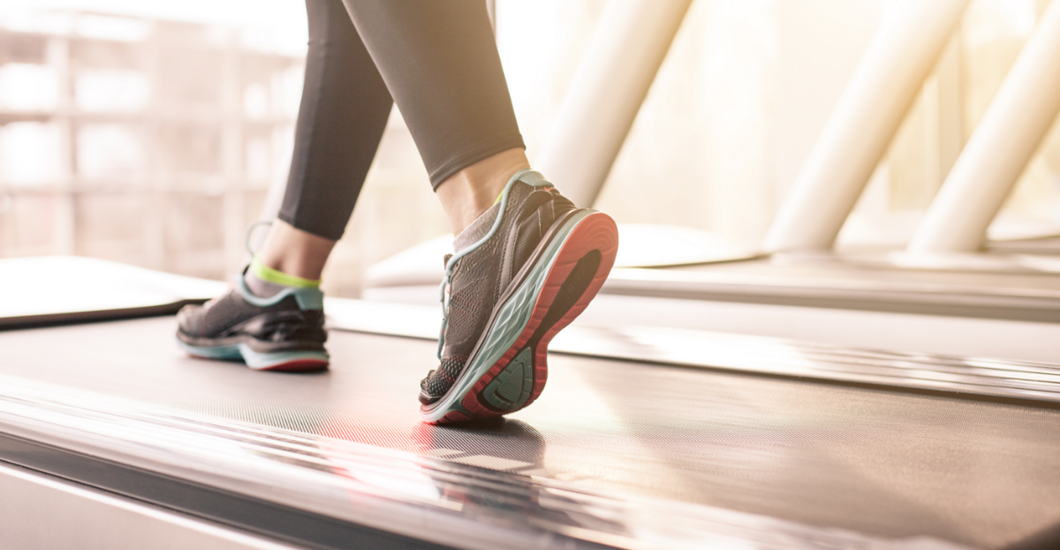In an era where sedentary lifestyles and the prevalence of processed foods contribute to a growing concern about obesity, the significance of regular exercise in achieving and maintaining a healthy weight cannot be overstated. Exercise is not only instrumental in burning calories but also plays a crucial role in enhancing metabolism, improving cardiovascular health, and promoting overall well-being.
In the pursuit of weight loss, individuals often grapple with time constraints and busy schedules that can hinder the ability to engage in lengthy workout sessions. This reality prompts a critical question: Can a mere 20 minutes on the treadmill make a meaningful impact on weight loss? This inquiry delves into the intersection of time efficiency and fitness effectiveness, challenging conventional notions about the duration of exercise necessary to achieve weight loss goals. In this exploration, we aim to unravel the science behind weight loss, dissect the role of exercise intensity and duration, and ultimately determine whether a concise 20-minute treadmill session holds the potential to be a viable solution for those on the quest for a healthier weight.
The Science of Weight Loss
The Relationship Between Calories Burned and Weight Loss
One fundamental principle governing weight loss is the balance between calories consumed and calories expended. Understanding this delicate equilibrium is essential in comprehending the science behind shedding excess weight. Weight loss occurs when the body expends more calories than it takes in, creating a calorie deficit. This deficit prompts the body to tap into its energy reserves, primarily stored in the form of fat, leading to a reduction in overall body weight.
The Role of Exercise in Creating a Calorie Deficit
Exercise serves as a potent tool in the pursuit of a calorie deficit. Engaging in physical activity elevates the body's energy expenditure, effectively burning calories and contributing to the overall calorie balance. Beyond the immediate impact of calories burned during exercise, regular physical activity can elevate the basal metabolic rate, fostering a more efficient calorie-burning process even at rest. This not only aids in weight loss but also underscores the long-term benefits of incorporating exercise as a sustainable strategy for maintaining a healthy body weight.
The Factors Influencing Weight Loss, Including Diet and Metabolism
While exercise is a pivotal component of the weight loss equation, it is crucial to acknowledge the multifaceted nature of this process. Diet, comprising the types and amounts of food consumed, plays an equally vital role in determining overall caloric intake. Additionally, individual metabolic factors, influenced by genetics and lifestyle, contribute to variations in how bodies respond to calorie restriction and exercise. A holistic understanding of weight loss necessitates a comprehensive approach that considers the interplay of diet, exercise, and metabolism, each acting as integral components in achieving and sustaining a healthy weight. As we navigate the science of weight loss, these factors come together to shape a nuanced perspective on the intricate dynamics of achieving a balanced and sustainable approach to a healthier lifestyle.

Benefits of Cardiovascular Exercise
How Cardiovascular Exercise, Such as Treadmill Workouts, Contributes to Weight Loss
Cardiovascular exercise, encompassing activities like treadmill workouts, forms a cornerstone in the journey toward weight loss. These exercises elevate the heart rate and engage large muscle groups, resulting in a substantial increase in energy expenditure. The sustained, rhythmic nature of treadmill sessions facilitates the creation of a calorie deficit, a key factor in shedding excess weight.
The Impact of Exercise on Metabolism and Fat Burning
Engaging in cardiovascular exercise goes beyond immediate calorie expenditure; it influences the body's metabolism in ways that extend beyond the workout itself. Regular cardiovascular activities, such as those performed on a treadmill, have been shown to enhance metabolic rate, both during and after exercise. This increased metabolism not only contributes to more efficient calorie burning but also accentuates the body's ability to utilize stored fat as a fuel source. By fostering an environment conducive to fat burning, cardiovascular exercise plays a pivotal role in sculpting a leaner physique and promoting sustainable weight loss.
Additional Health Benefits Associated with Regular Cardiovascular Exercise
Beyond its impact on weight loss, regular cardiovascular exercise offers a myriad of additional health benefits. These include improved cardiovascular health, strengthened immune function, enhanced mood through the release of endorphins, and better management of stress. Treadmill workouts, as a form of cardiovascular exercise, contribute to the overall well-being of individuals by promoting better circulation, reducing the risk of chronic diseases, and fostering a sense of mental and emotional balance.

20-Minute Treadmill Workout Plan
Warm-Up (3 minutes):
- Start with a brisk walk at a moderate pace (3-4 mph) to gradually increase your heart rate.
- Incorporate light dynamic stretches, focusing on the lower body, to prepare your muscles for the workout.
Interval Training (12 minutes):
Note: Adjust speed and incline based on your fitness level.
Speed Intervals (5 minutes):
- 1 minute: Jog at a challenging pace (5-6.5 mph)
- 1 minute: Recover with a brisk walk (3-4 mph)
- Repeat this pattern for 5 minutes.
Incline Challenge (5 minutes):
- 1 minute: Walk at a moderate pace with an incline of 5%
- 1 minute: Increase the incline to 8% and maintain a brisk walk
- 1 minute: Return to 5% incline, increase speed slightly
- Repeat this pattern for 5 minutes.
Sprint Intervals (2 minutes):
- 30 seconds: Sprint at your maximum effort (7-9 mph)
- 30 seconds: Active recovery with a slow walk (2-3 mph)
- Repeat this pattern for 2 minutes.
Cool Down (5 minutes):
- Gradually decrease your speed to a slow walk for 3 minutes.
- Use the remaining 2 minutes for static stretching, focusing on your calves, hamstrings, quadriceps, and hip flexors.
Additional Tips:
- Stay hydrated throughout the workout.
- Listen to energizing music to maintain motivation.
- Focus on maintaining good posture and engaging your core.
- Adjust speed and incline based on your fitness level and comfort.
Note: Before starting any new exercise program, especially high-intensity workouts, it's advisable to consult with a healthcare professional or fitness expert, especially if you have any existing health concerns or conditions. Adjust the intensity and duration based on your fitness level and gradually progress as your endurance improves.

Conclusion
In the quest for effective and time-efficient weight loss strategies, the question of whether 20 minutes on the treadmill is adequate has been thoroughly examined. The synthesis of scientific principles, practical considerations, and real-world examples sheds light on the multifaceted nature of this inquiry.
While the science of weight loss affirms the importance of a calorie deficit, and cardiovascular exercise, such as a 20-minute treadmill workout, contributes to this deficit, the overall effectiveness depends on a combination of factors. The relationship between calories burned and weight loss is undeniable, yet the role of exercise is intricately woven into a broader tapestry that includes dietary habits, individual metabolism, and lifestyle choices.
The benefits of cardiovascular exercise extend beyond mere calorie expenditure. A 20-minute treadmill session, when approached with intensity and purpose, not only aids in weight loss but also enhances metabolism, promotes fat burning, and delivers a plethora of additional health benefits. The dynamic nature of interval training, coupled with the convenience of time, makes it an attractive option for those navigating busy schedules.






Leave a comment
All comments are moderated before being published.
This site is protected by hCaptcha and the hCaptcha Privacy Policy and Terms of Service apply.